quarter round - Yes or No?
Our main floor doesn’t have it and we are replacing the carpet on top floor with engineered hardwood flooring.
So, We are in a dilemma whether to have the quarter round or not in the top floor now.
Can any one please shed some light or share your experience on importance of having a quarter back?
I never had to notice these details until now...😣
THANKS A TON!!!!
Comments (30)
Amy Lynn
3 years agoDefinitely for a hard surface floor! Gives a nice finished look and hides any gaps or uneven cuts.
Related Professionals
Lewisville Flooring Contractors · South Lake Tahoe Flooring Contractors · Greenville General Contractors · Gloucester City Interior Designers & Decorators · Seal Beach Architects & Building Designers · East Islip Kitchen & Bathroom Designers · Piedmont Kitchen & Bathroom Designers · White House Kitchen & Bathroom Designers · North Bergen Furniture & Accessories · Newton Furniture & Accessories · Kansas City Furniture & Accessories · Catonsville General Contractors · De Pere General Contractors · River Forest General Contractors · Warrenville General ContractorsAmy Lynn
3 years agoI suppose everyone has an opinion on the look of quarter round. I absolutely don't agree that it is used to cover up a poor install. We have always used quarter round to finish a hard surface floor, regardless of whether we have run the flooring under the baseboard or not. To my eyes, I don't like the look without. It looks unfinished.
If you aren't sure, don't take anyone else's opinion on the matter, seeing as there is not a right or wrong way. As Patricia says, remove baseboards before install, run flooring under and reinstall baseboard over top. If you are happy with how it looks, great! Go with it. If it looks off or unfinished to you, install the quarter round.Amy Lynn
3 years agoAlso, if you are not handy to be able to remove and reinstall baseboards yourself, you will be paying extra to have it done, and not an insigificant amount. Once reinstalled, they will need to be recaulked and painted by someone.
If the extra cost and work is something you don't want, then quarter round is the only real way to cost effectively hide the required gap along the baseboard.millworkman
3 years agoIf required use FLOOR Moulding, not quarter round. If the flooring if gapped properly and the base board covers it well enough it if totally up to you at that point.
Mrs. S
3 years agolast modified: 3 years agoI disagree that quarter round makes things look finished... I wouldn't choose that in advance if there's a choice. Quarter round is trying to be an unobtrusive way to cover up gaps from a less-than-ideal flooring install. Sometimes, things just work out that way, and if you love quarter round, then you won't mind it.
I put 7 1/2" high baseboard into my home when we had our downstairs flooring done. I specified all manner of details that were important to me, such as
-No quarter round
-No transition strips between the wood floors and tile we put in the kitchen,and separately, in the laundry room area
-Picture-frame type floor-layout around the hearths
etc.
An excellent installer can plan for these things and will do them if asked, but it needs to be specified in the contract.
I think most people end up with quarter round because they didn't think it was an option (or they are trying to save money by re-using the baseboard.
3onthetree
3 years agolast modified: 3 years agoSome mythical man once said "I don't always use quarter round, but when I do I use shoe moulding."
Not using a shoe mould will require more labor and detailing. Not all baseboard is thick enough to cover the gap required. Going under the drywall as part of the gap? Requires shaving sometimes. Leaving the baseboard on when converting from carpet? Must use shoe mould. Have a tiny bit of waviness in the floor? Shoe mould can bend while baseboard can not.
pstein15
3 years agoWhat is a reasonable cost for white quarter round. Out estimate was over $ 1000 for about 120 ft.
WestCoast Hopeful
3 years agoI love the look of baseboard and hardwood. Nothing else. Clean and finished.
greentea9909
3 years agolast modified: 3 years agoI’ve used quarter round for ease of flooring install, but I have found it does have drawbacks. For one, it creates an unavoidably larger gap when you want to push a furniture piece like shelves flat against a wall. So in that sense it does sort of shrink your space.
SJ McCarthy
3 years agoThe real question is, do you LIKE the look of a 1/2" gap at every wall? Where you can see all that bunk gathering?
if you answer No, then you accept the extra cost of moulding.User
3 years agolast modified: 3 years agoWe recently had this same dilemma. We didn't love the look of quarter round, but it was the most practical option in our floating floor installation (and as we all know-sometimes to most practical option does win out). To achieve a more "seamless" look, we used cove molding. It took us some research to find one that was wide enough to cover the expansion gap, but I am very happy with the outcome and the cost was about the same as quarter round. The cove molding provided the same benefit as quarter round (allowing for expansion gap in our floating floor without removing all of the baseboards) but aesthetically blended into our current baseboards better. I've attached a few photos, but please forgive the fact that we still have nail holes to patch and touch-ups to do.
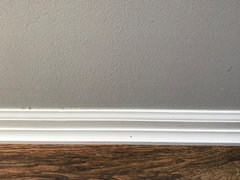

WestCoast Hopeful
3 years agoKF since your baseboards have detail this looks like a continuation of it. Here mine. Would completely change the look with moulding. And not in a good way
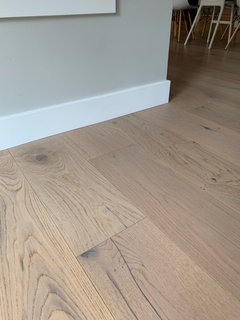
dani_m08
3 years ago@KF - I did the same research right before I had carpet removed and hardwood floors installed in the rest of my house - I had decided that I don’t want to use shoe molding (never considered quarter round). I think your cove molding looks nice. I know that cove molding is apparently more “fragile“ because of the thinner end - but if you don’t have a bunch of kids beating up your molding, I’m sure it works fine.
Someone above posted that you ALWAYS have to add shoe molding/quarter round when you replace carpet with wood floors - that is not true. I had new engineered hardwood floors installed a few months ago - and no added molding. The plan was to add some cove molding - but my installer called me and said that he could either add the molding, or use a very small caulk line (small gap that was consistent along the entire run of the baseboards). It was an easy choice for me because I preferred the look of just a baseboard. He told me that he’d come back and install the cove molding if I changed my mind - but I don’t think that will happen.
While I know there will be some people who will ”scold” me for allowing my installer to use caulk (movement causing cracking or whatever) - I “researched“ it on Houzz prior to giving my answer - and Joseph Corlett LLC said that it was fine! LOL!pstein15
3 years agoVery good. That may affect my choice of color. Going back and forth between dark gray and a very light color floor. The caulk may show more with a dark floor. Some people are true artists with caulk. It may not even show. Big savings. Better look.
3onthetree
3 years agoSomeone above posted that you ALWAYS have to add shoe molding/quarter round when you replace carpet with wood floors - that is not true.
The commandment is when you install flooring, whether hardwood, engineered wood, laminate, or LVP, they all need to stop short of the wall/baseboard to allow for expansion. If you do not, you will have problems. When baseboard is installed prior to carpet, there are 2 methods:
1. Resting on the subfloor, carpet is tucked next to it. So, once you remove the carpet and install your new solid flooring with an expansion gap, you need to cover this gap with moulding.
2. Raised up from the subfloor (usually by laying a scrap piece of baseboard under it, so it's lifted about 3/8"+ up vertically), carpet is tucked under it. So, once you remove the carpet, your new solid flooring (total thickness underpad, etc) might sit above this 3/8"+ vertical gap and needs moulding to cover the expansion gap. If however the solid floor does in fact fit under the baseboard, 99.9% chance the baseboard will not sit tight as if you installed the baseboard after laying the flooring. Any small vertical gap will vary as installing 12' or 16' lengths of baseboard can sag or have been adjusted to hide a crown in the subfloor. Moulding hides this, as caulk is a 2nd rate DIY solution.
If you don't want a base mould, then you can remove the baseboard and reinstall it after flooring. I don't imagine anyone would leave it and resort to using a jamb cutter for the entirety of a room. For a required expansion gap wider than the baseboard thickness, you can slice a bit off part of the drywall bottom to take advantage of an extra 1/2" gap if needed.
There are many different profiles of millwork trim. They all have specific purposes and designs based on that purpose. When someone installs a profile that is not meant for a base moulding, it looks obvious as DIY.pstein15
3 years agoYou said a mouthful, and I didn’t quite understand it. It sounds tike your recommendation is to remove the baseboard, and then reinstall it, hopefully it won’t crack. My 20 year old baseboard is wood, painted white.
Gor Low
3 years agoIMO if at all possible I avoid 1/4 round I do not think it looks finished it usually is used to cover up poor install of flooring.
dani_m08
3 years ago@3onthetree - There was room underneath the baseboard - maybe it’s ”luck” but my engineered hardwood floors - 5/8” - fit underneath- with barely any gap. My installation was not done DIY as already stated - and my flooring pro is not “second rate” - he works in a neighborhood with $1 mil + homes (in the Midwest where $1 mil homes are pretty substantial) and he wasn’t a “cheap” bid. Did he ask me my preference before spending more $$ to achieve a look that he knew I wasn’t really wanting? Yes. Would he have removed the baseboards and reinstalled them a “titch” lower OR installed shoe moulding if I wanted? Yes. He just offered to do it this way so I could decide.
Actually, I probably could remove the caulk, and it would look better than many installations I’ve seen posted. If you don’t like the look of a tiny line of caulk AND don’t like the look of the cove molding, that’s a personal opinion. I doubt many people would look at my baseboards, or the ones posted by @User, and think that they look awful and must be DIY.
Just because you don’t like how something looks, doesn’t mean it looks cheap. I guess I will never understand why people have to make rude comments. Simply stating that “industry standards provide for _______________” - in order to inform the OP - is perfectly fine. There just is no need to take shots - especially when there have been pros who have said that it’s okay to do.
FYI - I wasn’t trying to be rude when I posted my comment - I was simply stating that it’s not a true statement that moulding has to be installed whenever baseboards are left on when replacing carpet - there are times that the baseboards were originally installed at a height that works. As I already stated, I could really remove the caulk if I wanted - very tiny gap would only be left - much smaller than many professional installs here on Houzz.SJ McCarthy
3 years agolast modified: 3 years ago@dani_m08. Well said and 100% correct! Not all base must come off. Some floors can fit under the base. It takes I little fiddling to slide the floor underneath. But it is considered acceptable practice...because it looks GOOD AND it maintains manufacturer requirements!
Good PROs Talk to their customers, like yours did, to give people a Choice. And caulking is considered acceptable because it can look good...so long as the caulking matches the trim/base. And as long as the customer approves.
dani_m08
3 years ago@SJ McCarthy - I appreciate your comment - I respect your opinion very much. Your guidance/advice on Houzz has been extremely helpful for MANY people. I also appreciate the manner in which you deliver your advice - even when an OP doesn’t appear to be listening to the good advice he/she is receiving. Always respectful. Thanks again!
3onthetree
3 years agolast modified: 3 years ago@dani_m08 A little sensitive? Skipping over the in-depth description to snap on "2nd rate" and "DIY looking?" An opinion is if you prefer shoe mould or not, of which I've never stated my opinion, but rather given the technical how's and why's. You can often see pros giving blunt, straightforward advice in threads, even from the commenters you are enamored with, because that is what is needed sometimes. Yes, for most things it is obvious for a right or wrong way, but if a non-pro does it the "almost right" way, that doesn't mean they should get fawning over what they post. If you only want agreement, pick a Facebook group.
Congratulations on coincidentally having solid floor fit under the existing baseboard. So if you need caulk, that means it must be around an 1/8"+ gap. You realize the floor has to be taped? That there will be a concave shape to the caulk line, and you can't sand the caulk? If you have to "fiddle" to get a floor like laminate under a baseboard, that is worse because you are compressing the underlayment too much at the perimeter?
Millwork profiles do make a difference. That's why there are different baseboard heights and 1/4 round sizes, and shoe is oblong in section. The scale must work together. So now I'll actually take that shot instead of speaking about the subject in general. The picture KF posted is wrong. It looks like a crown moulding picture turned upside down. Too much of the base is hidden. Too much detail drawing your attention where the floor transitions to wall. Doesn't mean KF is a bad person, it works for them, but this particular example shouldn't be propagated for others to follow.
dani_m08
3 years ago@3onthetree - not sensitive. There simply was no reason to comment about the way my flooring was installed as being a “second rate DIY installation.“
People with expertise in a particular area should always inform people of applicable industry standards related to the subject matter of the discussion. That is one of most important aspects of Houzz. With that being said, people (professionals and laypersons)should also feel free to provide alternate ideas/solutions in a discussion - so long as the same are not (i) safety hazards, and/or (ii) in violation of any applicable laws/codes/regulations/etc.
KF was simply providing an example of what she/he did to finish the baseboards in his/her home. While you may not like the way it looks because it appears to be crown moulding located upside down along a floor, there’s no reason to make a disparaging remark about it looking DIY. Simply stating that cove moulding is not supposed to be used for that purpose would have sufficed. The shot of “DIY” is pejorative - especially here on Houzz.
The same relates to the comment I posted. Choosing to qualify “DIY” by adding “second rate” just further added to the negativity. If you read my comment, you’ll notice that I wasn’t even suggesting that the OP complete his/her baseboards in the manner mine have been. I simply made the comment in order to let the OP know that maybe his/her flooring will fit underneath the baseboard also - and if it does, it could be finished the way mine currently is. That’s all. I wasn’t taking a shot at you. I wasn’t being nasty. It kinda seems like you are the one who is a bit sensitive simply because I made a comment that contradicted yours. You said in your initial post that whenever carpet was removed and replaced with other flooring, moulding was required. Even if that’s the case 99%% of the time (I have no idea of how often it is or isn’t), that still means sometimes the flooring fits underneath the baseboard. In my case, it did - and if you read all of my last comment - you’d know that it didn’t really need the caulk line (which I realized after I scrolled through MANY photos of professionally installed baseboards with a tiny gap - around 1/16” is normal). The point of my post was just to share that with the OP (and others who may be interested) in alternative ways of finishing their floors/baseboard transitions. Many comments on Houzz are posted for the same exact reason. We all already know that ripping out your old dated honey oak cabinets in order to start with new ones is the preferred professional solution when someone has decided to install new granite/quartz/marble countertops. However, not everyone has the money (or inclination) to do that. So, people CONSTANTLY offer alternative ideas/thoughts/solutions on Houzz. Just because someone offers up a different idea which is not what the professional solution from a KD would be, does not mean that they should be told that their painted cabinets make their kitchen look like a second rate DIY update. Especially not when they haven’t even posted a photo of what their solution looks like. . .
I spent some time looking into adding a tiny line of caulk when it was presented to me as an option - and as I’ve already stated, there are PROS who said it was fine. I also acknowledged that using caulk wasn’t an industry standard by making a joke about being “scolded” by people for doing it. I did so in order to let OP know that it wasn’t standard - and to try to avoid having someone feel the need to post a comment to inform me/OP that it wasn’t (obviously, my attempt at making fun of myself for doing something that wasn’t normally done didn’t work). I thought that if I called it out on my own as not being a ”professional” solution, that no one else would feel the need to do so.
I also want asking/expecting/requesting ANYONE TO FAWN over my solution. So, I guess there’s no need for me to go join a FaceBook group - although I‘m not exactly sure what that means as I don’t use FaceBook - I can only assume that you‘re referring to people posting photos of whatever (family/pets/new houses/etc) which then can be liked by others (similar to posts on Houzz). I don’t ever go back to check on whether anyone “liked” one of my posts or not so. . . ???
I have read MANY comments on Houzz where people freely give legal advice to people in discussions - and MANY times that advice is not applicable to the situation and/or incorrect. As an attorney, I could jump in and post a comment every time this happens - informing everyone that, not only is the advice what someone professionally trained in the legal profession would give, but also add some type of comment that specifically belittled the person who gave the advice - but I don’t. Now, if someone is handing out “legal advice” in a manner which may cause an OP (or some future reader) to act (not act) in a manner which has the possibility of some adverse legal consequences, I will post a comment. When I do so, I ALWAYS try to do it in a manner which will not sound demeaning or make someone feel as if I am questioning his/her intelligence. I simply do my best to not insult anyone.
You may not think that you wrote anything insulting - however (as I pointed out above), telling someone that the his/her moulding choice looks “DIY” or that her floors have been finished in a “second rate DIY“ manner, is simply not being respectful/nice. Adding the those comments were not necessary in order to provide information for the OP (or anyone else).
I’m not going to continue in some stupid/useless battle on here re: this subject. I’ve wasted more time on it than I should have already. The ONLY reason that I decided to post this comment (or my previous one) is because I really don’t understand why people say (write) some of the things they do on here. I just don’t feel like there’s any reason to make negative comments towards people/their ideas/their homes/their decorating choices. It’s kind of like when something goes wrong and immediately people jump to the conclusion that the OP was a cheapskate and hired a hack/purchased the cheapest materials he/she could find when there are no stated facts which lead to that conclusion. Negative/rude/disparaging comments are detrimental to Houzz because it stops many people from posting/commenting for fear of receiving the same treatment.
With respect to your question asking me if I realize that the floor has to be taped - I assume that you mean this:
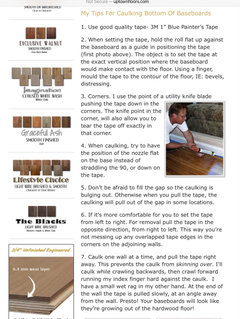
Again - it wasn’t a “DIY” project - and as I already wrote - I wasn’t home when this was done by my flooring professional. I assume that he did it in a manner similar to what Uptown Floors has posted in the pro advice section re: causing baseboards. As to it being concave - I’ve never put my head down by the floor to study it - it looks “straight” and “finished” to me. There’s nothing to sand. It’s wide plank European Oak that was nail/glue assist installed so no laminate that’s been fiddled with to fit it underneath the baseboards.
In the event you did not intend your comments to be negative/disparaging, then I truly apologize to you for writing this long response. I also apologize to the OP (and everyone) for interfering with the purpose of this discussion.pstein15
3 years agolast modified: 3 years agoYour comment on ripping out honey oak cabinets before installing granite, but not everyone has the money or inclination. Our condo complex, honey oak cabinets. Built 2000. A number of condo occupants have used the condo painter to paint them white. They came out looking brand new from the factory. Total cost was about $ 1400, galley kitchen. I was shocked. He took the doors off and did those at his home. I asked him about doing mine, and he dissuaded us, as the honey oak cabinets still look new. We do have a speckled blackish granite countertop, we had a good contractor put in.
On the baseboard caulk comments. I like reading everyone’s ideas. We are having the Karastan LVP Luxe plank installed. To remove or not remove the baseboard, that is the question. A neighbor had hers removed and reinstalled, and it is so banged up. In the hallways, she had the baseboards undercut, rather than removed. That looks worse. The undercutting wasn’t straight and left noticeable gaps.
3onthetree
3 years agoIn the event you did not intend your comments to be negative/disparaging, then I truly apologize to you for writing this long response.
@dani_m08 And there it is, I don't think I took a shot at anyone nor is anything I said disparaging to a person. I perused some threads you have commented on. Feel free to browse mine. You have a modus operandi - anything said opposite or in hard truth of an OP's thread, you take personally (for the OP). Carry on.
Therese N
2 years agoQuarter round is still available, but it’s an obsolete term regarding baseboards. Shoe is the term installers use now and it is similar but a narrower profile. It really depends on your preference and how your floors turn out. If the base fits nice and tight, and covers your gaps, then that nice crisp edge is all you need. It’s a cleaner look and more modern. I reused our old rance base on our upper floors and it really needed that extra piece. On our main floor I put wide plank white oak and new base, so that’s all I needed.
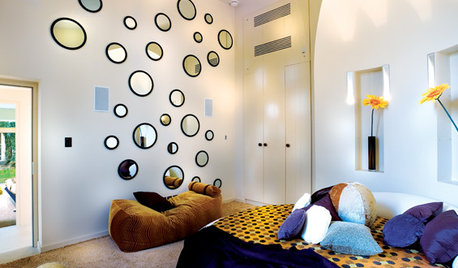
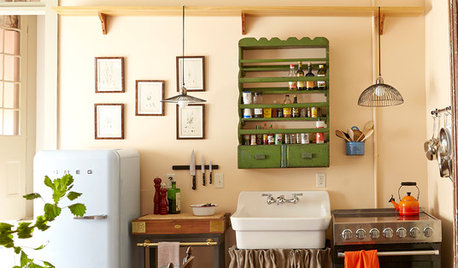
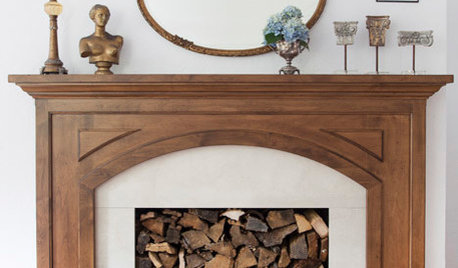
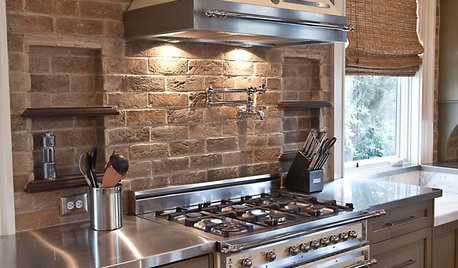
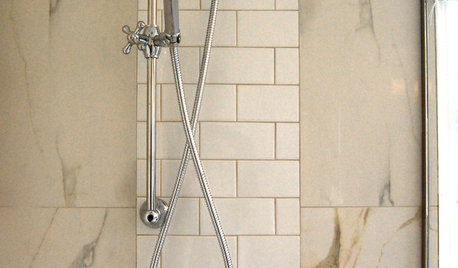

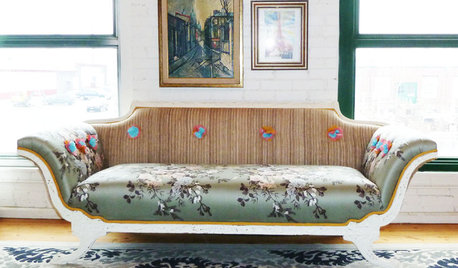
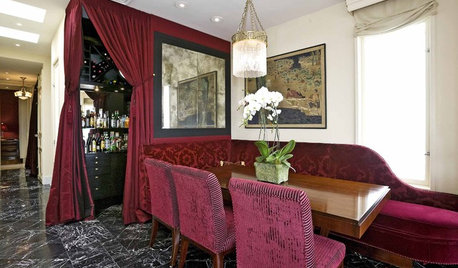

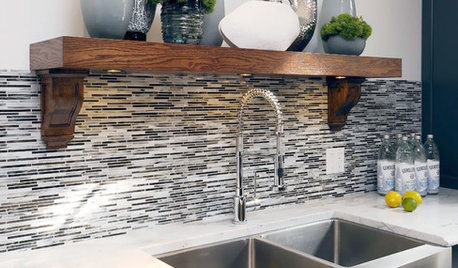







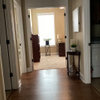
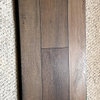
Patricia Colwell Consulting